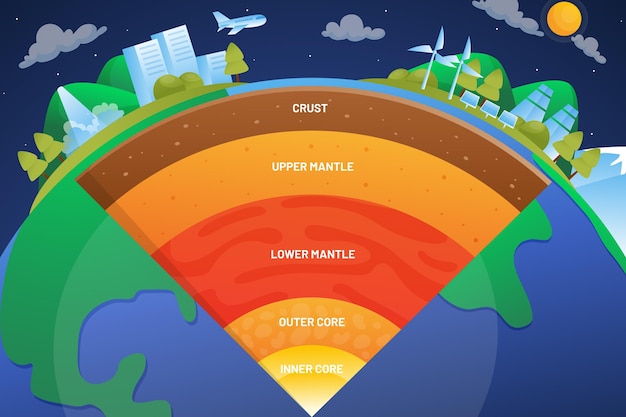Interesting Earthquake Facts for Kids

Earthquakes are powerful shakes that happen on the Earth’s surface.
Earthquakes can happen suddenly and without any warning signs.
The Earth’s crust is made up of huge pieces called tectonic plates.
When these plates move, they can cause an earthquake.
The largest earthquake ever recorded happened in Chile in 1960 and had a magnitude of 9.5.
Earthquakes can happen underwater and cause tsunamis.
California is known for its many earthquakes because it lies on the Pacific Ring of Fire, a hotspot for seismic activity.
The first seismograph, a machine used to measure earthquakes, was invented by Chinese astronomer Zhang Heng in the 2nd century.
The intensity of an earthquake is measured using the Richter scale.
The strongest earthquakes can cause buildings and bridges to collapse.
Earthquakes can also trigger landslides and avalanches.
Japan experiences over 1,000 earthquakes every year.
The country of Iceland was formed from volcanic activity caused by earthquakes.
Some animals can sense earthquakes before they happen and behave strangely.
Earthquakes can cause the ground to shake for several minutes or even hours.
The movement of plates that causes earthquakes is called plate tectonics.
The city of San Francisco in the United States is known for the devastating earthquake it experienced in 1906.
Earthquakes can cause underground pipes and cables to break, leading to water and electricity disruptions.
Interesting Earthquake Facts for Kids part 2
The word earthquake comes from the old English word eorthcwealm, which means earth movement.
Earthquakes can create cracks and fissures in the Earth’s surface.
Some earthquakes are so small that people don’t even feel them.
The largest fault line in the United States is the San Andreas Fault.
Earthquakes can cause the ground to open up and swallow objects.
Earthquakes in the ocean can sometimes create new islands.
In ancient times, people believed that earthquakes were caused by mythical creatures or angry gods.
Earthquakes can cause underwater volcanoes to erupt.
The state of Alaska in the United States has the highest number of earthquakes annually.
The vibrations from an earthquake can travel through the Earth’s layers.
The Great East Japan Earthquake in 2011 caused a devastating tsunami that killed thousands of people.
Earthquakes are more common in certain areas of the world because of the movement of tectonic plates.
Some buildings are designed to withstand earthquakes and are called earthquake-resistant or earthquake-proof structures.
Earthquakes can cause the ground to liquefy, turning it into a liquid-like substance.
The feeling of an earthquake can be compared to riding on a roller coaster.
Scientists use seismographs to study and monitor earthquakes.
Earthquakes can create mountains and valleys over millions of years.
The vibrations from an earthquake can be detected by seismometers around the world.
Feeling anxious or scared during an earthquake is normal, and it’s important to stay calm and follow safety procedures.
The highest magnitude earthquake ever recorded was in 1960 in Chile and had a magnitude of 9.5 on the Richter scale.
Scientists can predict the likelihood of an earthquake in certain areas based on historical data and monitoring.
Earthquakes can cause changes in the Earth’s magnetic field.
Some earthquakes are caused by human activity, such as mining or fracking.
It is important to have an emergency plan prepared for earthquakes, including a safe meeting place and emergency supplies.
Earthquakes can cause rocks to slide down mountains, creating dangerous rockslides.
The shockwaves from an earthquake can travel through the ground, causing objects to vibrate and shake.
Our knowledge of earthquakes is constantly evolving as scientists continue to study and learn more about them.

